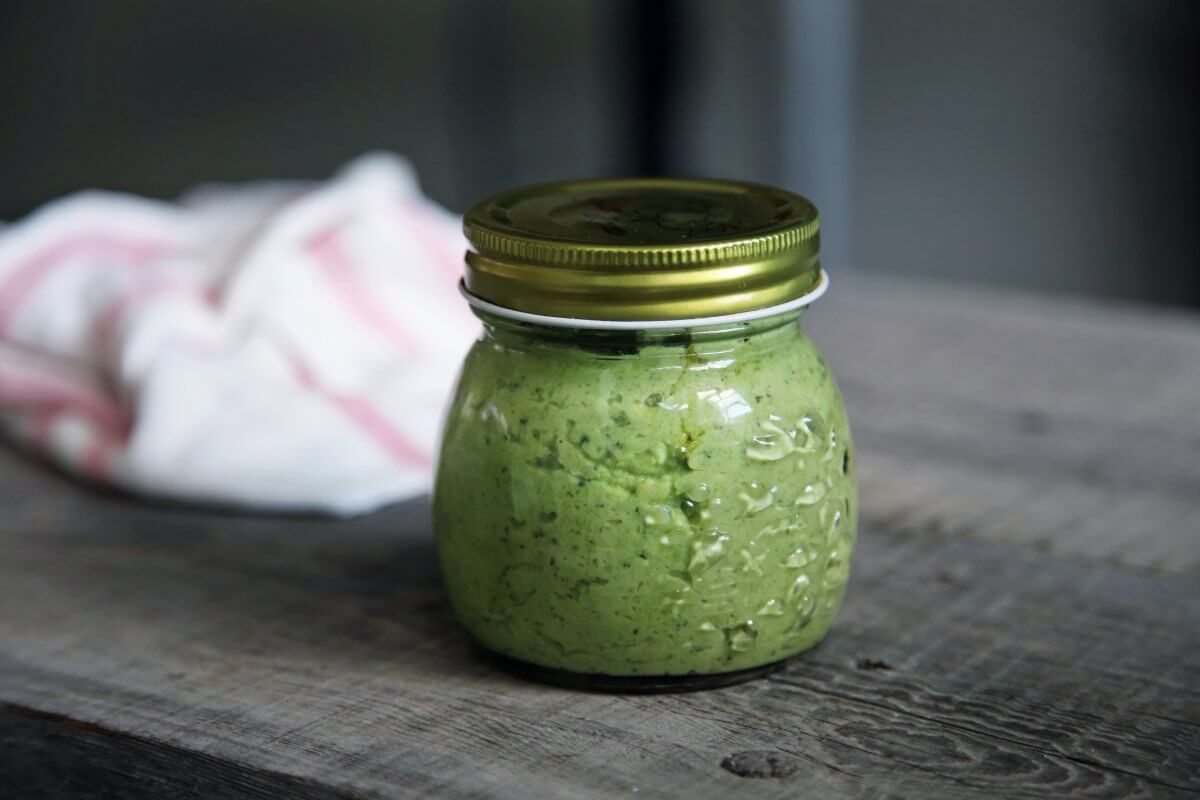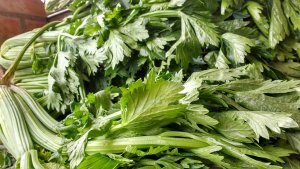Don’t Toss Out Those Celery Leaves! They’re a Nutritional Powerhouse
If you’re like most people, you probably chop off the celery leaves and toss them in the trash without a second thought. After all, they’re tough and bitter, right? Wrong! As it turns out, the are a nutritional powerhouse that you don’t want to miss out on. Not only are they packed with vitamins and minerals, but they also contain a range of unique compounds that can boost your health in surprising ways. From fighting inflammation to improving digestion, they offer a wealth of benefits that you simply can’t afford to ignore. So, before you toss out those leaves, read on to discover why they’re worth adding to your diet. With a little creativity and know-how, you can turn this often-overlooked part of the celery plant into a delicious and nutritious addition to your meals.
History & Background
Celery has been cultivated for thousands of years, and the leaves have been used in traditional medicine for just as long. In ancient times, celery was used to treat a range of ailments, including high blood pressure, arthritis, and indigestion. Today, modern science has confirmed many of the health benefits of celery, including its ability to reduce inflammation, lower blood pressure, and improve digestion. However, for many people, the leaves of the plant are still an afterthought.
It actually belongs to the vegetable family, as it comes from the Apiaceae family, which also includes parsley, carrots, and fennel. However, I tend to think of the soft leaves as a herb, much the same as parsley or coriander.
What Form Do They Take?
- Fresh leaves
- Celery salt
- Herbaceous Seasoning
Celery leaves are the green, leafy part of the celery plant that grows above the stalks. They are usually attached to the celery stalks at the base, and can be easily removed with a sharp knife or kitchen scissors. The leaves are thin and delicate, and have a slightly bitter taste that can be off-putting to some people. However, with the right preparation, they can be transformed into a delicious and nutritious addition to a variety of dishes.
Dry out celery leaves in a low-temperature oven or dehydrator until they become crispy. Once dry, crush them into a fine powder and mix with salt to create homemade celery salt. This seasoning can then be used to enhance the flavor of various dishes.
The leaves have a mild and slightly bitter taste, similar to celery stalks. Try using them as a herbaceous seasoning in various dishes. Finely chop the leaves and sprinkle them over roasted vegetables, grilled meats, or sautéed dishes for an extra layer of flavor.
We have included a link for Dried Celery Leaf, so you will always have some ready to use in your cooking.
Dried Celery Leaves by Delish.
Made from high quality celery these celery flakes are a favorite staple in the jitcehn. Use in home-made soups, stews, casseroles, rubs and dips.
Long shelf-life. Kosher. Just rehydrate and use.
5 ounces of flavor in a resealable container.
Are Celery Leaves Good for You?
Are there any benefits to using celery leaves? Absolutely! The leaves are an excellent source of a variety of vitamins and minerals, including vitamin C, vitamin K, folate, and potassium. They also contain a range of unique compounds that have been shown to have a wide range of health benefits. For example, the leaves contain luteolin, a flavonoid that has been shown to have anti-inflammatory and antioxidant properties. Additionally, the leaves are rich in chlorophyll, a compound that has been shown to have detoxifying and immune-boosting effects.
Flavor Profile of Celery Leaves
The flavor profile of celery leaves can be described as slightly bitter and herbaceous, with a hint of celery flavor. Some people find the taste of the leaves to be too strong, but there are many ways to balance out the bitterness and make them more palatable. For example, you can mix the leaves with other herbs and spices to create a flavorful seasoning blend, or use them to add depth and complexity to soups, stews, and sauces. So why not start using these delicious, nutritious herbs in your next recipe.
Cooking with Celery Leaves Recipes
Celery leaves, often get overlooked when used in cooking. This part of the celery plant can actually be quite versatile and add flavor to various dishes. Here are a few ways you can use celery leaves:
- Herb garnish: Celery leaves can be used as a garnish to enhance the presentation and flavor of soups, stews, salads, or roasted vegetables. They provide a fresh, herbaceous note and can be sprinkled on top of the dish just before serving.
- Salad ingredient: Celery leaves can be used as an ingredient in salads to add a refreshing and slightly bitter taste. Toss them in with other greens, vegetables, and herbs to add texture and flavor.
- Pesto or sauce: Blend celery leaves with other herbs like parsley, basil, or cilantro, along with garlic, nuts, olive oil, and lemon juice, to create a flavorful pesto or sauce. This can be used as a dip, spread, or sauce for pasta, sandwiches, or grilled meats.
- Soup or stock flavoring: Adding celery leaves to soups, broths, or stocks can impart a subtle celery flavor. You can include the leaves while simmering the broth and remove them before serving, similar to how you would use other fresh herbs.
- Juice or smoothie ingredient: If you enjoy juicing or making green smoothies, celery leaves can be added to provide an extra layer of flavor and nutrients. They can complement other fruits and vegetables in your blend.
- Herb-infused oil: Infuse oil with celery leaves by gently heating them in oil over low heat. Once cooled, strain out the leaves, and use the flavored oil in dressings, marinades, or drizzled over roasted vegetables for added taste.
Remember that celery leaves have a stronger flavor than the stalks, so you may want to taste and adjust the quantity according to your preferences and the specific dish you’re preparing.
One of the easiest ways to prepare and use celery leaves is to chop them up finely, or coarsley, and sprinkle them over salads, sandwiches, and other dishes for a burst of fresh flavor. You can also use them as a garnish for cocktails. I also love to mix them with other herbs to create a flavorful pesto. In fact I have included my favorite recipe for pesto which includes using fresh parsley leaves.
Remember to always wash the leaves thoroughly before using them in your cooking to remove any dirt or debris. Enjoy experimenting with celery leaves in your recipes and have fun exploring new flavors!
Okay, here is the recipe I mentioned earlier. I love making this pesto as it is quick and easy to prepare – simple with no fuss. You can store this in your fridge for up to 5 days – if it lasts that long!
Celery Leaf Pesto
Ingredients:
- – 2 cups fresh celery leaves
- – 1/2 cup fresh parsley leaves
- – 1/2 cup grated Parmesan cheese
- – 1/2 cup toasted pine nuts
- – 2 garlic cloves, minced
- – 1/2 cup extra-virgin olive oil
- – Salt and freshly ground black pepper
Cooking instructions:
- Combine the celery leaves, parsley, Parmesan cheese, pine nuts, and garlic in a food processor and pulse until finely chopped.
- With the machine running, slowly pour in the olive oil and blend until smooth.
- Season the pesto with salt and pepper to taste.
- Store in an airtight jar.
- Serve the pesto with pasta, grilled vegetables, or crusty bread.

Common Uses
In addition to their culinary uses, celery leaves have a variety of other applications. For example, you can use them to make an alcohol-free mouthwash that can help freshen your breath and kill bacteria. Simply steep a handful of celery leaves in hot water for 10-15 minutes, strain out the leaves, and use the liquid as a mouthwash. They can also be used to make a soothing tea that can help calm the nerves and promote relaxation.
Another use for the leaves is as a beauty treatment. The high levels of chlorophyll contained within the leaves can help detoxify the skin and promote a healthy glow. To make a celery leaf face mask, simply crush a handful of the leaves and mix them with a tablespoon of honey. Apply the mixture to your face and leave it on for 10-15 minutes before rinsing off with warm water.
Alternatives to Celery Leaves
If you’re not a fan of the taste of celery leaves, there are plenty of other herbs and greens that you can use instead. For example, parsley, cilantro, and basil all have a similar flavor profile to celery leaves and can be used in many of the same ways. You can also try using arugula, spinach, or kale as a substitute when preparing soups, stews, and other dishes.
In conclusion, don’t let the bitterness of celery leaves scare you away from this nutrient-packed part of the celery plant. With a little creativity and experimentation, you can find plenty of ways to incorporate celery leaves into your diet and reap the many health benefits they have to offer. So, next time you’re preparing celery, don’t toss out those leaves!
Have a look at our substitutes section for ideas on what you can use in place of celery leaves.
Table of Contents
- Don’t Toss Out Those Celery Leaves! They’re a Nutritional Powerhouse
- History & Background
- What Form Do They Take?
- We have included a link for Dried Celery Leaf, so you will always have some ready to use in your cooking.
- Are Celery Leaves Good for You?
- Flavor Profile of Celery Leaves
- Cooking with Celery Leaves Recipes
- Common Uses
- Alternatives to Celery Leaves

